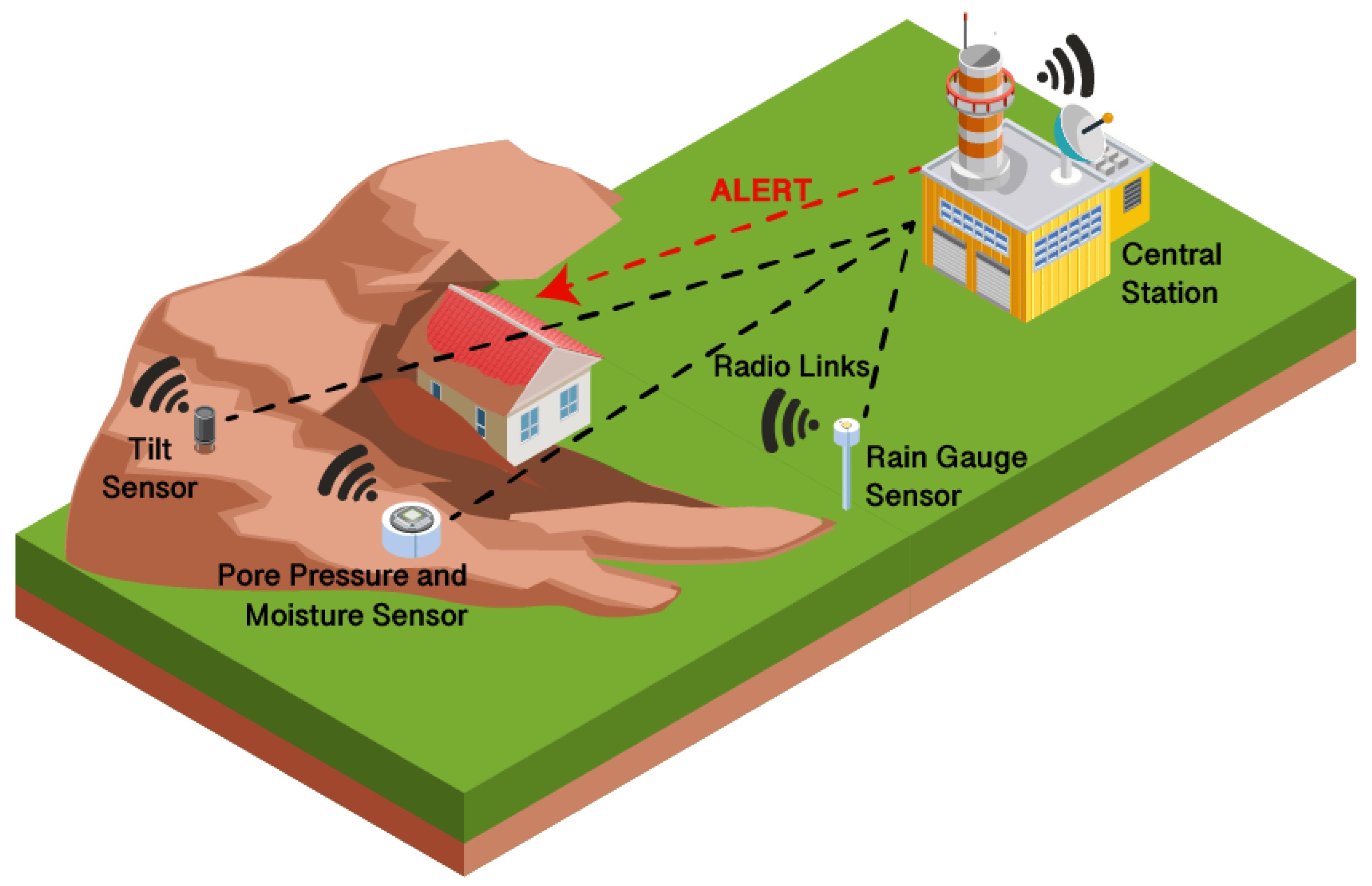How Flood Alerts Work: Early Warning Systems And Response Strategies

Table of Contents
Understanding Flood Alert Systems
Flood alert systems rely on a complex interplay of technology and data analysis to predict and warn of impending floods. Let's explore the key components:
The Role of Technology
Several technologies work in concert to provide accurate and timely flood alerts:
-
Rainfall sensors: These ground-based sensors continuously monitor rainfall intensity and accumulation. Data is transmitted in real-time to central processing units, providing crucial input for flood prediction models. The density of these sensors in a given area significantly impacts the accuracy of localized flood predictions.
-
River level gauges: Strategically placed along rivers and streams, these gauges measure water levels with high precision. This data is vital in tracking river flow and identifying potential areas of flooding. Changes in water levels, particularly rapid increases, trigger alerts.
-
Weather radar (Doppler radar): Doppler radar systems provide crucial information about precipitation intensity, location, and movement. By analyzing radar data, meteorologists can forecast rainfall patterns and assess the risk of flooding in specific areas. The data also helps in estimating the volume of rainfall and its potential impact on river levels.
-
Hydrological models: Sophisticated computer models integrate data from rainfall sensors, river gauges, and weather radar to simulate river flow and predict flood risk. These models consider factors such as soil saturation, topography, and drainage patterns to provide highly detailed flood predictions. Continuous improvement in model accuracy is crucial for effective flood warning.
-
Satellite imagery: Satellite-based remote sensing provides a broader perspective, offering valuable information on rainfall patterns over larger areas and enabling the assessment of flood extent. This technology is particularly useful in monitoring widespread flooding events. High-resolution satellite imagery can identify inundated areas and assess the severity of the flood.
Data Processing and Analysis
Raw data from various sources is collected and processed using sophisticated algorithms and prediction models. These models consider historical data, real-time observations, and weather forecasts to estimate flood risk. Data accuracy and reliability are paramount; even small errors in input data can significantly impact the accuracy of flood predictions. Continuous quality control and data validation are therefore crucial.
Types of Flood Alerts and Their Dissemination
Flood alerts come in various forms, with different levels indicating the urgency and severity of the impending flood.
Different Alert Levels
Different agencies use varying terminology, but generally, alert levels include:
-
Advisory: Indicates a potential for flooding. This is often a preliminary alert, suggesting that people should monitor the situation and prepare.
-
Watch: Indicates that flooding is possible and that people should remain alert and monitor the situation closely. Preparatory measures should be taken.
-
Warning: Indicates that flooding is imminent or occurring. Immediate action is required, including evacuation if necessary.
Understanding the urgency conveyed by each alert level is crucial. A warning demands immediate action, while an advisory may allow for more time to prepare.
Communication Channels
Dissemination of flood alerts is critical for effective response. This typically involves multiple channels:
-
Emergency Alert System (EAS): This system broadcasts urgent alerts through television and radio, reaching a wide audience. The EAS is often used for widespread, severe flooding events.
-
Text message alerts (SMS): Many agencies offer SMS-based flood alerts, providing timely warnings directly to subscribers' mobile phones. While effective, SMS alerts can be limited by network coverage and the recipient's ability to receive the message.
-
Mobile apps: Numerous weather apps and specialized flood alert apps provide real-time updates, forecasts, and warnings, often with interactive maps showing affected areas.
-
Website and social media: Government agencies and news organizations use websites and social media platforms to share information, maps, and updates on flood situations.
-
Local news and media: Local news outlets play a crucial role in disseminating flood alerts and providing up-to-date information to the community.
Effective Response Strategies Following a Flood Alert
Preparing for a Flood
Proactive preparedness is vital. A comprehensive plan can significantly reduce the impact of a flood:
-
Create a family emergency plan: This plan should outline evacuation routes, meeting points, and communication strategies.
-
Identify evacuation routes and safe locations: Know where to go in case of evacuation, and familiarize yourself with alternative routes in case primary routes are blocked.
-
Gather essential supplies: Stock up on food, water, first-aid kits, medications, and other essentials to sustain your family for several days.
-
Secure important documents and valuables: Store important documents in waterproof containers and consider moving valuable items to higher ground.
Responding to a Flood Warning
Heeding official flood warnings is critical:
-
Evacuate if instructed: Do not hesitate to evacuate if authorities issue an evacuation order.
-
Move valuables to higher ground: If evacuation is not necessary, move valuable items to upper floors or higher ground.
-
Unplug electrical appliances: Protect yourself from electrocution by unplugging appliances and disconnecting electrical sources.
-
Stay informed: Continue to monitor alerts and updates from official sources.
Post-Flood Recovery
Recovering from a flood can be a lengthy and challenging process:
-
Contact insurance companies: Report flood damage to your insurance company immediately to initiate the claims process.
-
Seek help from emergency services and local authorities: Utilize resources provided by local authorities for assistance with cleanup and recovery.
-
Document damages: Take photos and videos of damage to support insurance claims.
Conclusion
Understanding how flood alerts work is crucial for protecting lives and property. By leveraging advanced technology and effective communication channels, flood alert systems provide invaluable early warnings, allowing for timely preparation and response. Familiarize yourself with your local flood alert system, create a family emergency plan, and know how to respond effectively to different alert levels. Staying informed and prepared is your best defense against the devastating impacts of flooding. Remember to sign up for local flood alerts to receive timely warnings and protect yourself and your community. Don't wait for a flood to strike; take action today and prepare for potential flood events in your area.

Featured Posts
-
 Zheng Qinwens Breakthrough Italian Open Semifinals After Sabalenka Victory
May 25, 2025
Zheng Qinwens Breakthrough Italian Open Semifinals After Sabalenka Victory
May 25, 2025 -
 Investigating Thames Waters Executive Bonuses Performance And Public Trust
May 25, 2025
Investigating Thames Waters Executive Bonuses Performance And Public Trust
May 25, 2025 -
 Ferrari Challenge Racing A South Florida Spectacle
May 25, 2025
Ferrari Challenge Racing A South Florida Spectacle
May 25, 2025 -
 Tisice Prepustenych Kriza Zasahuje Nemecke Spolocnosti
May 25, 2025
Tisice Prepustenych Kriza Zasahuje Nemecke Spolocnosti
May 25, 2025 -
 Legal Battle Amsterdam Residents Vs City Council Tik Toks Impact On Local Businesses
May 25, 2025
Legal Battle Amsterdam Residents Vs City Council Tik Toks Impact On Local Businesses
May 25, 2025
